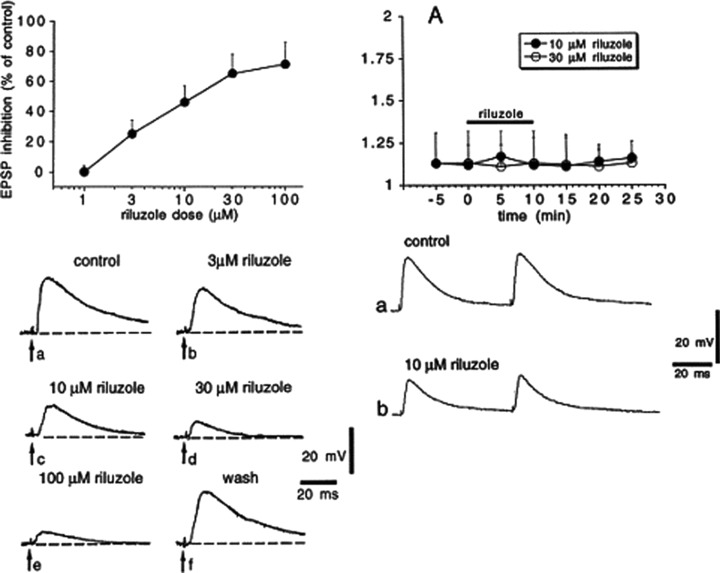Figure 4.

Riluzole inhibits non‐NMDA glutamate receptor excitatory postsynaptic potentials (EPSPs) in rat striatal spiny neurons but does not alter paired pulse facilitation. (Left panel) Riluzole inhibits EPSPs evoked by cortical stimulation. The graph in the upper part of the figure shows the dose–response curve obtained at various concentrations of riluzole on the amplitude of corticostriatal EPSPs. Each data point was obtained from at least four single experiments; the IC50 for EPSP inhibition was 6 μM. The lower part of the left panel shows averages (four single sweeps) of EPSPs recorded from a striatal spiny neuron under control condition, during the application of four different concentrations of riluzole and after 30 min washout. Each concentration was applied for 10 min. The resting membrane potential of the cell was −87 mV and was constant throughout the experiment. (Right panel) Riluzole does not alter paired pulse facilitation. (A) The graph shows the amplitude ratio of the second EPSP response to the first EPSP response (EPSP2:EPSP1) before, during, and after the application of two different concentrations of riluzole (black bar). Traces in the lower part of the figure show synaptic responses to paired stimulation under control condition (a) and after 10 min application of 10 μM riluzole (b). Reprinted from [12], copyright (1998), with permission from Elsevier.
